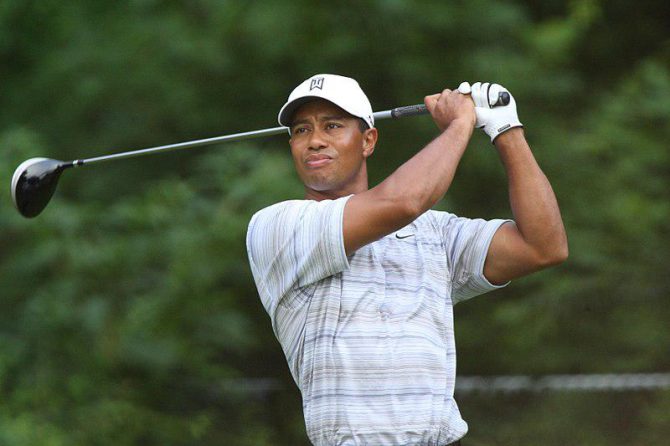Seve ballesteros, a legendary figure in the world of professional golf, has left an indelible mark not only through his competitive achievements but also through his innovative instructional methodologies. his approach to the game transcended conventional techniques, focusing on intuitive shot execution, nuanced trajectory management, and strategic navigation of golf courses. By harnessing creativity and developing a profound understanding of ball dynamics, Ballesteros crafted instructional practices that resonate with both amateur and elite golfers. This analysis delves into the unique aspects of his teaching methods, exploring how they continue to influence contemporary golf instruction and inspire players seeking to elevate their performance on the course.Through a extensive examination of his techniques, we aim to elucidate the principles underlying Ballesteros’s ideology and their lasting impact on the sport.
innovative Shot Execution Techniques in Seve Ballesteros’s Golf Instruction
Seve Ballesteros revolutionized the art of shot execution in golf, making notable strides in how players approach various situations on the course.One of the key aspects of his technique was his ability to manipulate ball trajectory through a combination of stance adjustments, grip pressure, and club selection. Ballesteros was particularly adept at hitting high fades and low draws, allowing him to adapt his shots depending on the environmental conditions and course layout.This versatility became a hallmark of his playing style, showcasing not only his technical skill but also his deep understanding of ball physics.
Another vital component of Ballesteros’s approach was his engagement with the mental side of golf. He emphasized strategic shot planning that involved assessing risk factors and evaluating the most effective angle of attack for each hole. His ability to visualize shot trajectories prior to execution empowered him to make smarter decisions, often leading to triumphant outcomes even in precarious situations. This foresight,combined with an innate feel for the game,enabled him to tackle challenging lies and hazards with remarkable efficacy.
| Technique | Description |
|---|---|
| Grip Adjustment | Varies grip pressure to influence shot spin and trajectory. |
| Stance Variation | Changes foot positioning to achieve desired ball flight. |
| Visual Approach | uses mental imagery to plan shots before execution. |
| Risk Assessment | Evaluates hazards to inform strategic decision-making. |
Moreover, Ballesteros’s innovative strategies extended to his short game, where he combined creativity with execution precision. Rather than relying solely on conventional chipping techniques, he employed an array of shots—from delicate flops to low-running chips—that caught opponents off-guard. His understanding of the green’s contours and his skilled use of various clubs allowed him to navigate challenging situations with relative ease, making him one of the finest short game practitioners of his era.
Mastering Trajectory Management for Enhanced Performance
When it comes to trajectory management, Seve Ballesteros’s innovative techniques highlight the importance of versatility in shotmaking.Ballesteros understood that controlling the ball’s flight path was pivotal to achieving success on the golf course. His method emphasized the use of varied trajectories not only to navigate obstacles but to maximize scoring opportunities. This strategic approach enabled him to play effectively in various conditions, from calm evenings to blustery windy days.
Key components of Ballesteros’s trajectory management include:
- Club Selection: Understanding the relationship between club length and angle of attack to achieve desired heights.
- Ball position: Adjusting the ball’s position in relation to the stance to influence flight characteristics.
- Grip Pressure: Modulating grip tension to promote either a softer or more aggressive strike, affecting launch angles.
To demonstrate his techniques, it is crucial to analyze how variations in setup can directly impact trajectory. the following table summarizes the effects of changing ball position and clubface alignment on the resulting shot type:
| Ball Position | Club Face Alignment | Resulting Trajectory |
|---|---|---|
| Forward | Open | High Fade |
| Center | Square | Medium straight |
| Back | Closed | Low Draw |
Strategic Course Navigation: Insights from Ballesteros’s Approach
Seve Ballesteros’s approach to golf transcended mere technique; it was a masterclass in strategic course navigation.His ability to visualize each shot and assess course topography allowed him to leverage both his strengths and the weaknesses of the terrain. **Key insights** from his method include an emphasis on understanding the layout of the course, honing one’s ability to read greens, and prioritizing risk assessment during play.
One of Ballesteros’s hallmark strategies involved **analyzing the risk-reward balance** before choosing a shot.He famously calculated the likelihood of success against the potential consequences of a failed attempt. This led him to employ creative shot-making that other players may have deemed too risky. His decisions stemmed from thorough reconnaissance of each hole, assessing factors such as wind direction, ground conditions, and hazards.This meticulous preparation enabled him to convert challenging situations into birdies more frequently enough than not.
additionally, he embraced **option strategies**, such as opting for less conventional paths to the green. Rather than following a straight line, he frequently navigated around bunkers and trees, using his unique short game skills to his advantage. His strategic insights can be distilled into practical principles, including:
- Evaluate distances and angles critically.
- identify safe zones and target areas on the greens.
- Adjust strategies based on real-time course feedback during play.
Ballesteros’s legacy is not merely in his tournament victories but also in the cerebral approach he imparted to the game. His commitment to strategic course navigation has paved the way for golfers looking to improve their on-course decision-making, equipping them with the tools needed to challenge the complexities of golf.
The Role of Creative Visualization in Ballesteros’s Teaching Methods
Seve Ballesteros’s approach to golf emphasized the significance of **creative visualization** as a basic component of effective shot execution. This technique encourages golfers to mentally picture the desired outcome of their shots before execution,allowing them to harness their cognitive faculties for improved performance. By envisioning the trajectory, distance, and necesary spin of the ball, players can enhance their focus and control, leading to a greater probability of success on the course. Ballesteros believed that a golfer’s mental rehearsal could influence physical execution, thus bridging the gap between thought and action.
In practice, Ballesteros encouraged golfers to incorporate visualization exercises into their training routines.He advised players to take a moment before each shot to mentally simulate the entire process, including the swing mechanics and the expected reaction of the ball upon landing. This phase of planning not only prepares the mind but also helps in crafting a strategic approach to course navigation. For example, a golfer might visualize the exact point where they want their ball to land, taking into account potential obstacles like bunkers or water hazards, thus reinforcing a more confident and decisive shot choice.
The effectiveness of this method can be underscored through visual aids that capture mental imagery. Below is a
| Visualization Component | Description |
|---|---|
| Target Awareness | Identify the precise target area on the green. |
| Shot Type | Envision the necessary shot type (fade, draw, etc.). |
| Follow-through | Visualize the complete swing path and follow-through. |
to illustrate how each element can be broken down into actionable thoughts. By fostering comprehensive cognitive strategies intertwined with physical practice, Ballesteros’s methods not only enhance a golfer’s ability to execute shots but also contribute to a more holistic understanding of the game itself.
Implications of Ballesteros’s Techniques for Modern Golf Instruction
The techniques pioneered by Seve Ballesteros challenge conventional methodologies and promote a more adaptable approach to golf instruction that aligns with modern learning styles. by prioritizing **feel** and **intuition** over strict mechanics, Ballesteros’s methods encourage golfers to develop their unique stroke patterns and shot-making abilities. This approach can be particularly beneficial in a sport where personalization and adaptability are crucial, fostering creativity and self-expression on the course.
Moreover, the emphasis on **trajectory management** in Ballesteros’s instruction opens avenues for innovative training practices that modern instructors can integrate into their curricula. By understanding the physics behind different shot trajectories, golfers can learn to manipulate ball flight effectively. This understanding allows players to address various course conditions and improve their overall performance. It is essential for instructors to incorporate **technology** and **simulations** that can analyze and enhance students’ trajectory management skills.
In implementing Ballesteros’s strategies, golf educators must also focus on **strategic course navigation**.Modern golf instruction should move beyond fundamental swing techniques to include holistic gameplay strategies that teach players to read courses, assess hazards, and make tactical decisions. This comprehensive approach not only prepares golfers for competitive play but also fosters a deeper appreciation for the game’s nuances. By creating practice regimens that include elements of course strategy, instructors can better prepare their students for real-world scenarios, ensuring they are not just skilled players but also astute strategists on the golf course.
the examination of Seve ballesteros’s innovative golf instruction techniques offers profound insights into the synergy between technical skill and strategic understanding in the game of golf. His distinctive approach to stroke mechanics,combined with an acute awareness of course dynamics,not only transformed his own performance but also set a benchmark for future generations of golfers. By revealing the intricate interplay between creativity and control in his methodology, we underscore the lasting legacy of Ballesteros as more than just a champion on the course; he remains a beacon of inspiration for those striving to master the complexities of golf. This analysis serves as a foundational resource for both practitioners and scholars, encouraging a continued exploration of how his philosophies can shape contemporary instruction and the evolving narrative of the sport. As aspiring golfers and educators reflect on his techniques, they are reminded that the essence of the game lies not solely in the mechanics of swinging a club, but in the artistry and strategic thinking that elevate the sport to an unparalleled level of mastery.





